About Ice Cores Part III

Ice cores preserve stories of the past. Now we want to compare these stories with other history books. Illustration: Hanna Knahl
We have now already learned a lot about ice cores. We know where to find them, how to drill them and how to extract information about the past climate from them. BUT there is still one important piece of information missing. The time stamp. How do we determine how far back in time the ice we hold with our gloved hands comes from? We will see, the ice also uses special languages to encode this secret.
This is the last article of the series “About Ice Cores”. Here you find part I and part II.
 The Important Information: The Time Stamps
The Important Information: The Time Stamps
The use of the stories from the ice cores alone without reference points in time is limited. History books of different cultures, such as those of the European or Japanese cultures, are divided into eras. The history of the earth is also divided into different geological eras. Time stamps are assigned to the various pieces of information, such as the cultures or the states of the earth. To be able to relate the stories from our ice cores to this other information from the past, we need to find the time stamps in the ice cores. Once we have found the time stamps, we can also look up in a biology book, for example, which animals lived at the corresponding time.
There are various techniques for determining the age of the ice layers.
 In Search of Volcanic Fingerprints
In Search of Volcanic Fingerprints
Volcanic eruptions provide good clues about the age of the ice. During a volcanic eruption, huge amounts of ash are often thrown into the air. The composition of this ash depends on the volcano. Volcanoes have their own chemical fingerprint, which they can leave in the ice. How is that possible?
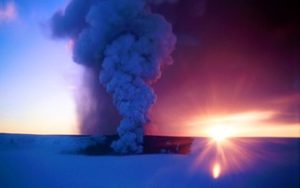
Eruption of the Grímsvötn (Iceland) at Dezember 19th in 1998 – second day of the eruption. Photo: Freysteinn Sigmundsson, Nordic Volcanological Centre, Institute of Earth Sciences, University of Iceland
The volcanic ash can be transported hundreds, sometimes even thousands of kilometres through the air. At some point, it sinks to the ground or is washed out of the air by snow and rain, and then also spreads on the ice sheet. Together with the snow a new ice layer is created after some years. The ash is frozen in the ice. Sometimes it can even be seen as a darker layer in the ice core with the naked eye (as in the picture below). If not, we have to resort to a translation tool again. In this case, it means melting the ice. Of course, only a small part of it, otherwise our drill core will be gone in a single measurement! In the water, we then measure the trace substances. We look for sulphur and dust particles, the fingerprints of the volcanoes. If we have been able to identify a volcano, we look in human history books to find out when this volcano erupted. These dates are often precisely documented, as volcanoes have always posed a danger to people, but also aroused a certain fascination.
Well done, by the volcanic fingerprints we found the first time stamps in the ice!
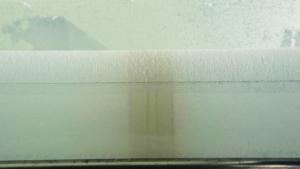
Layers of ash in an ice core. Photo: Sepp Kipfstuhl
 Step by Step Deeper into History
Step by Step Deeper into History
So now we have established the exact time of origin for some layers, but what do we do with the layers in between? Count them! No kidding, there are annual layers in the ice, similar to the annual rings of trees. To do the counting, let’s remember again that the temperature can be read from the ice. If the snow fell during a cold time, the layer contains little heavy oxygen. But if it was warm at that time, it contains more heavy oxygen. This is true for warm and cold periods as well as for summer and winter. The series of two thin layers, one with little and one with a lot of heavy oxygen, therefore represents one year and so we can count back year by year. So, by counting we can find many more time stamps between the volcano layers!
 The Icy Treasure is Decoded!
The Icy Treasure is Decoded!
We did it! We have now mastered great steps towards deciphering the secret of the ice.
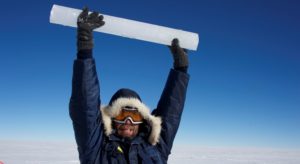
Foto: Sepp Kipfstuhl
We have found the entrance to the huge ice library and have already deciphered many languages of the icy books. We now understand what the little bubbles can tell us about the atmosphere of the past. We elicit the past temperature from the ice – completely without a thermometer. This tells us something about the climate and allows us to count annual layers. Volcanoes have also left their fingerprints on some pages of the icy book. These help us finding the time stamps. And we can be curious about which secret writings still are slumbering in the ice and what ways we will find to decipher them in the future!


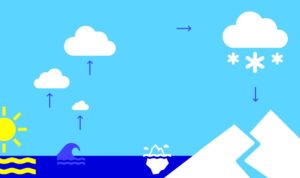
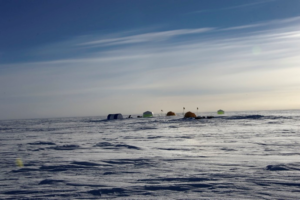
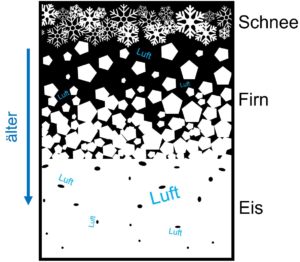
 You Want to Learn these Languages, too?
You Want to Learn these Languages, too?
In the English Master’s programme Environmental Physics at Faculty 1 of the University of Bremen, you will learn about the various fundamentals of our climate system (atmosphere, ocean, land, ice), primarily from a physical, but also from a chemical and mathematical perspective. This degree programme also includes an excursion to an alpine glacier as well as a module on paleoclimate (the past of climate history), in which ice cores and much more are dealt with. For the Master’s thesis, in which you can use the languages, the glaciology working group at the Alfred Wegener Institute in Bremerhaven would be a good choice. At least that’s what two students who helped with this article did. Thank you for that by the way! 🙂
 Conclduing Thoughts
Conclduing Thoughts
Climate activists and environmental physics students from the University of Bremen took part in the glacier excursion to the Fernagtferner in the Alps last year and found a glacier that has been melting for many years, even decades. The path of the excursion participants from the hut to the edge of the glacier gets longer almost every year. They always find a beautiful, fascinating and transformed preserver of information about the past. But with the currently foreseeable climate warming, it will probably not be preserved.
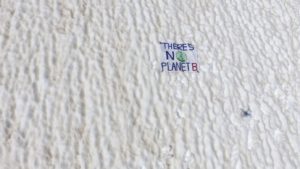
Climate activists from the Students for Future Bremen took this banner with them on their trip to the Fernagtferner in Austria, to document this message: “There is no planet B”. Photo: Christian Haas
Comment of the author: 
“This glacier is unique, just like this planet is unique. There is no plante B! It is our livelihood and worth preserving!”
 Sources and further Links
Sources and further Links
The article series “About Ice Cores” is based on the podcast advents calendar “Eis hoch 24” (ice to the power of 24) from 2020 (in German).
Youtube: https://www.youtube.com/channel/UC8ZphUO3AC8Xbt4SwXd589A
The topics of this article are discussed in episode 7 (historische Vulkanausbrüche/historic volcanic eruptions), episode 8 (Ascheschichten/ash layers), episode 9 (Vulkanforschung/Science of volcanoes) & episode 10 (Datierung/dating) behandelt.
Dating
http://www.si-journal.de/index2.php?artikel=jg20/heft2/sij202-3.html

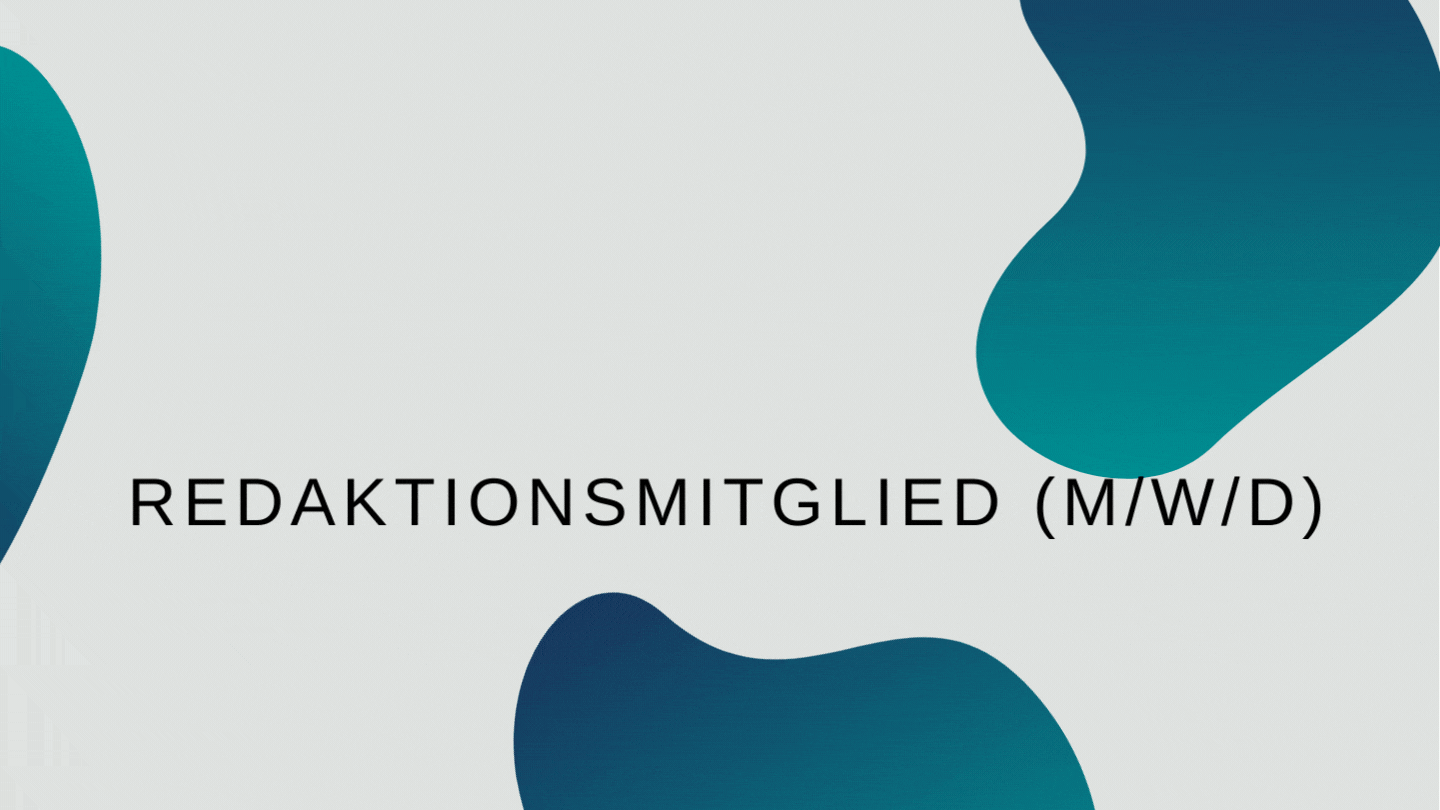






0 Comments
1 Pingback